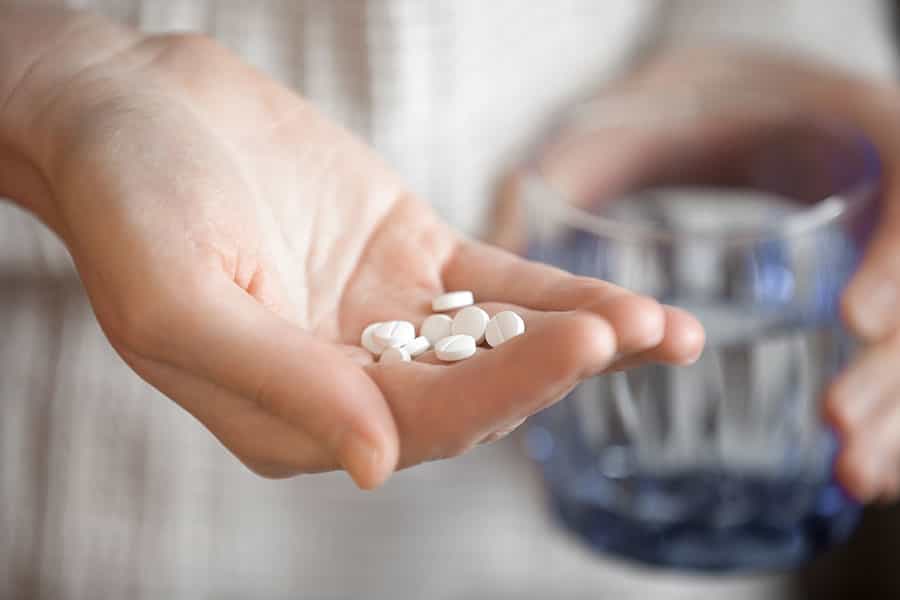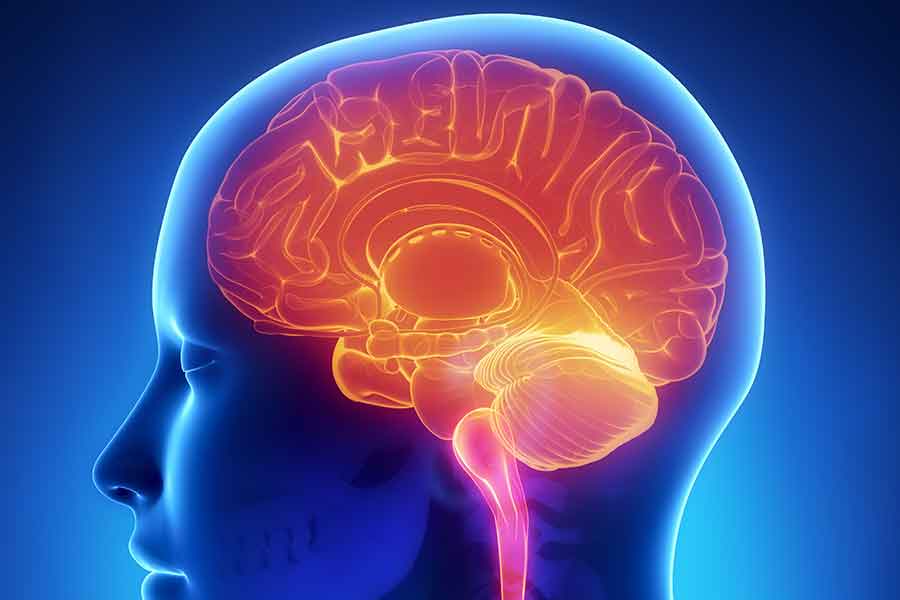Oxycodone is the active ingredient in a number of prescription opioid painkillers, including Oxycotin and Percocet, which are used to treat moderate-to-severe pain.
According to the Centers for Disease Control and Prevention, it is one of the most common opioids (along with methadone and hydrocodone) associated with overdose death. Every day, over 1000 people go to the emergency department for misusing opioids, and over 14,000 die a year from overdoses (stat from the year 2014).
How Does Oxycodone Work?
Oxycodone acts on the central nervous system by blocking receptors involved in pain induction. Through its interaction with the opioid receptors, oxycodone alters the levels of the neurotransmitter dopamine, which is one of the biochemicals involved in relaying messages of happiness and relaxation throughout the body. The drug has the potential to make users feel euphoric and extremely relaxed and to relieve feelings of anxiety and pain. It also has a sedative effect.
Is Oxycodone Addictive?
Yes, Oxycodone is addictive. It was categorized as a Schedule II drug by the Controlled Substances Act, meaning that it has a high potential for abuse, that it has a currently accepted medical use, and that using it might lead to severe psychological or physical dependence.
Is Oxycodone Dangerous when Combined with Other Drugs?
Yes. It can be dangerous when combined with alcohol and other opioids. Oxycodone is also dangerous because it can increase the effects of other depressants: anesthetics, antihistamines, barbiturates, cold medicines, narcotics, seizure medicine, muscle relaxants, pain medications, sedatives, sleeping medicine, and tranquilizers.
Illicit Oxycodone Use
In 2013, OxyContin was reformulated by its manufacturer (Purdue Pharma LP) into a version that is more difficult to abuse; it is hard to crush and dissolve, and thus more difficult to put into forms where it can be snorted and injected. Some suspect this reformulation has lead to illicit drug users shifting from oxycodone to heroin. Regardless, the oxycodone pills can still be found on the streets and are sold under various names: oxy, kickers, blue, hillbilly heroin, percs, 512, OC, ox, cotton, killers, beans, rushbo, and Orange County.
How Does Oxycodone Detox Work?
Quitting oxycodone cold turkey is not recommended. Qualified detox professionals should be sought to facilitate oxycodone withdrawal. The process involves weaning dependent people off the drug by decreasing the dose gradually over 5-10 days (depending on the person’s level of oxycodone use) or switching users to different opioids that induce less intense euphoria. During detox, the person’s vital signs are frequently checked and drugs are administered to reduce oxycodone withdrawal symptom severity. When going through detox as recommended, withdrawal is rarely lethal.
What Is Oxycodone Withdrawal Like?
Oxycodone withdrawal symptoms start about 8-12 hours after the last dose taken. They peak around 72 hours later, and the illness resembles the symptoms influenza.
Withdrawal symptoms include sweats and chills, goose bumps, fever, tremors, body aches, cold and hot flashes, malaise, headaches, psychological symptoms (irritability, agitation, inability to concentrate, mental fog, insomnia, anxiety, depression, suicidal thoughts), gastrointestinal disturbances (diarrhea, nausea, vomiting, stomach cramps), runny nose, trouble breathing, cardiovascular disturbances (high blood pressure and irregular heartbeat), dilated pupils, yawning, and tearing up.
Oxycodone withdrawal will last about a week, but cravings for oxycodone can persist for much longer.
How Are Oxycodone Withdrawal Symptoms Treated?
The National Institute on Drug Abuse recommends three treatments for oxycodone addiction: methadone, buprenorphine, and naltrexone. Buprenorphine is the drug of choice because methadone can be abused and (as mentioned earlier) is one of the three drugs associated with opioid overdose death.
Buprenorphine only partially activates the opioid drug receptor but remains active in the bloodstream for longer periods of time than oxycodone; it also does not produce the same euphoric effects. The high induced by buprenorphine is not intense and tops out after a certain amount is taken, so it is less likely to be abused. Methadone is similar to buprenorphine; it is a long-acting opioid that does not require large amounts or numbers of doses to keep the opioid receptors engaged. Many people going through oxycodone addiction treatment use these drugs for long periods of time (sometimes over a year).
Naltrexone is an opioid antagonist, which means it prevents opioids from fully activating the opioid receptors, and reduces the potential for feeling euphoria upon opioid use. This drug is combined with buprenorphine to prevent dependency and misuse with replacement opioid therapy. Vivitrol is an injectable, extended-release version of naltrexone, which has the benefits that it is longer lasting than naltrexone. The replacement opioid therapy aids addiction recovery by reducing the severity of withdrawal symptoms.
A number of other drugs can help treat the uncomfortable oxycodone withdrawal symptoms. Clonidine can be prescribed to help patients with anxiety, agitation, muscle aches, sweating, runny nose, and cramping. There are also drugs that can reduce gastrointestinal symptoms (vomiting and diarrhea) and insomnia. People who have abused opioid drugs often have problems with depression or anxiety, so drugs that ameliorate these psychological symptoms are often given for long-term use as well.
Are There Complications of Oxycodone Withdrawal?
Complications associated with oxycodone withdrawal are electrolyte imbalances and aspiration (or breathing in the stomach contents into the lungs), which can cause a lung infection. Another problem commonly encountered in oxycodone withdrawal is relapse and overdose. Individuals right after detox have the most trouble handling withdrawal symptoms and cravings. These uncomfortable feelings drive a person back to their regular drug use, right after the body has lost its tolerance to the drug. In these situations, people are most prone to experiencing oxycodone overdose and death.
What Are the Symptoms of Oxycodone Overdose?
Symptoms of Oxycodone overdose might include multiple of the following: extreme dizziness and weakness, chest pain or discomfort, slow or irregular heartbeat, change in or loss of consciousness, slow heartbeat, dilated pupils, decreased awareness or responsiveness, trouble breathing, cyanosis (blue-colored skin, fingernails, lips, and/or mouth area), cold and clammy skin, loss of muscle tone or lack of muscle movement, extreme sleepiness, and seizures.
Does Someone You Know Need Help?
People who have become addicted to drugs often display behavior changes. They may appear depressed, lethargic, or like they don’t care; they stop doing activities they once enjoyed, hang out with a different set of friends, and stop keeping up with their responsibilities. You might find drug paraphernalia around their homes or that your money is missing.
If you suspect someone you love has an addiction to a painkiller, like oxycodone, call Two Dreams today (708-613-4750). We specialize in the drug addiction treatment needed after detox. We can assist in reducing the risk that your loved one will relapse and overdose after detox treatment.
Sources:
http://www.cdc.gov/drugoverdose/data/overdose.html
http://www.fda.gov/NewsEvents/Newsroom/PressAnnouncements/ucm348252.htm
http://luxury.rehabs.com/oxycontin-addiction/street-names-and-nicknames/
http://www.mayoclinic.org/drugs-supplements/oxycodone-oral-route/description/drg-20074193
http://americanaddictioncenters.org/withdrawal-timelines-treatments/oxycodone/

